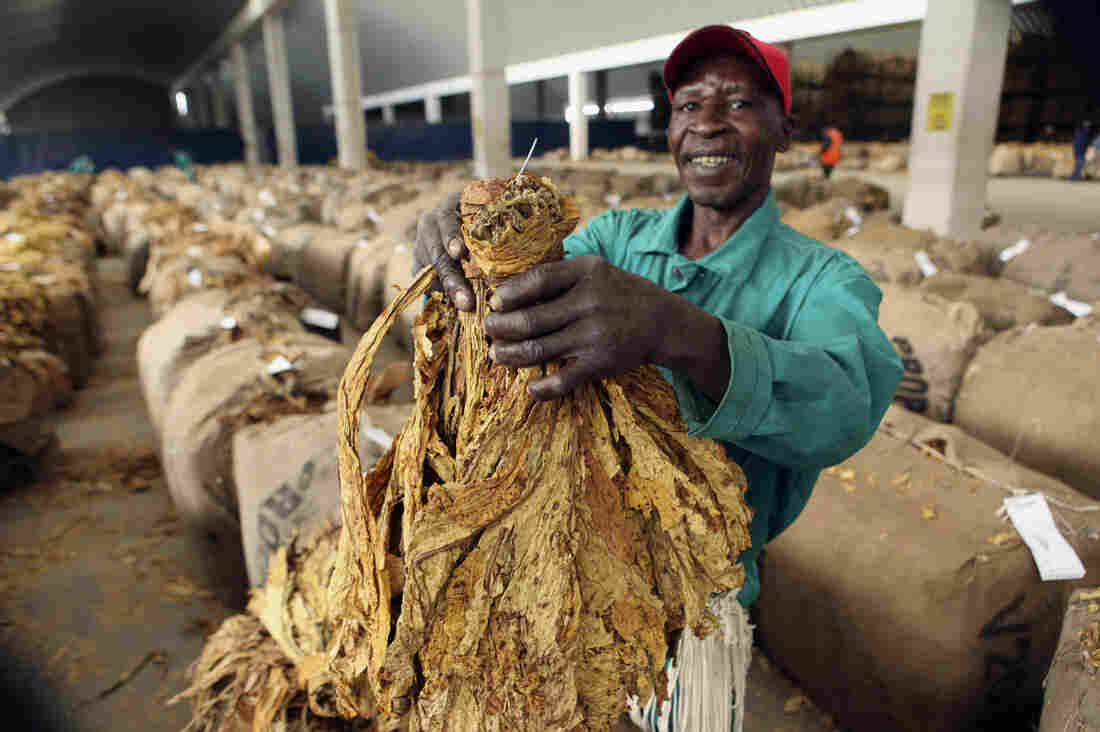Residents Fight To Block Fracked Gas In New York's Finger Lakes
At an October protest, hundreds of “We Are Seneca Lake” members block the gates of Crestwood Midstream to protest against the expansion of fracked gas storage in the Finger Lakes. PR Newswire/AP hide caption
itoggle caption PR Newswire/AP
New York state’s Seneca Lake is the heart of the Finger Lakes, a beautiful countryside of steep glacier-carved hills and long slivers of water with deep beds of salt. It’s been mined on Seneca’s shore for more than a century.
The Texas company Crestwood Midstream owns the mine now, and stores natural gas in the emptied-out caverns. It has federal approval to increase the amount, and it’s seeking New York’s OK to store 88 million gallons of propane as well.
That’s definitely not OK for a growing movement opposed to the plan. Since October, nearly 300 people have been arrested for blocking entrances to the storage site.
“These fossil fuels will not leave us with a viable future and certainly our lake is in immediate jeopardy,” says Regi Teasley, who recently joined the action.
Late last year, Gov. Andrew Cuomo banned hydro-fracking in New York state. But fracked gas is still present in the state, part of the nationwide distribution system. Crestwood executive Bill Gautreaux says the new project will relieve the propane shortages that in recent years have hit the northeast hard.
“Every time that happens it dramatically drives up the price for consumers,” he says. “So the demand for this facility is really, really high.”
Crestwood adds that those price spikes cost New Yorkers $100 million in 2013.
But opponents cite problems or accidents at other facilities. They fear gas could escape or the lake be ruined by leaking brine. A tanker truck or train might explode. They also question whether the caverns could collapse.
But even short of catastrophe, the project will industrialize the area, says Joe Campbell.
“This isn’t just a hole in the ground they’re going to pump gas into,” he says. “There’s a whole lot that goes with it.”
The addition things include a six-track rail siding, two large brine ponds, and a 60-foot flare stack. Campbell and others say these will hurt a growing tourism-based economy. Nearly 130 wineries now dot the region, and Wine Enthusiast magazine recently named the Finger Lakes one of the world’s 10 top travel destinations.
Will Ouweleen is getting ready to expand his Eagle Crest Vineyard. He says the Finger Lakes’ climate and soil allow fine European grapes to thrive. So he has joined with other wineries urging New York to reject the plan.
“Why mess with an economic engine that continues to grow at double-digit rates creating local, sustainable jobs and giving everyone in the region something to be proud of?” he asks. “Why take the risk?
Natural gas and propane are already stored in the area. Still, more than 300 business owners have signed a petition opposing the project. But not Jim Franzese. He owns a bed and breakfast and small motel right next to the site.
“If anybody should be concerned, it would be me,” he says. “They’ve been storing gas right up the street from me for years and years and years, since I was a kid. And we’ve never had any troubles. So I just don’t think it’s a major deal.”
Crestwood admits it underestimated the reaction to the project, but Bill Gautreaux insists many opponents are misinformed.
“It’s simple from a technical standpoint, very low risk on the spectrum of risks,” he says. “It would be more dangerous to get in your car and drive to work.”
Crestwood says the project will create up to 12 jobs and several hundred thousand dollars in annual tax payments. Gautreaux believes the fossil fuel industry can co-exist with wineries and tourism.
But the plan’s opponents hope to convince state officials to sign on to a different future.
This entry passed through the Full-Text RSS service – if this is your content and you’re reading it on someone else’s site, please read the FAQ at fivefilters.org/content-only/faq.php#publishers.










